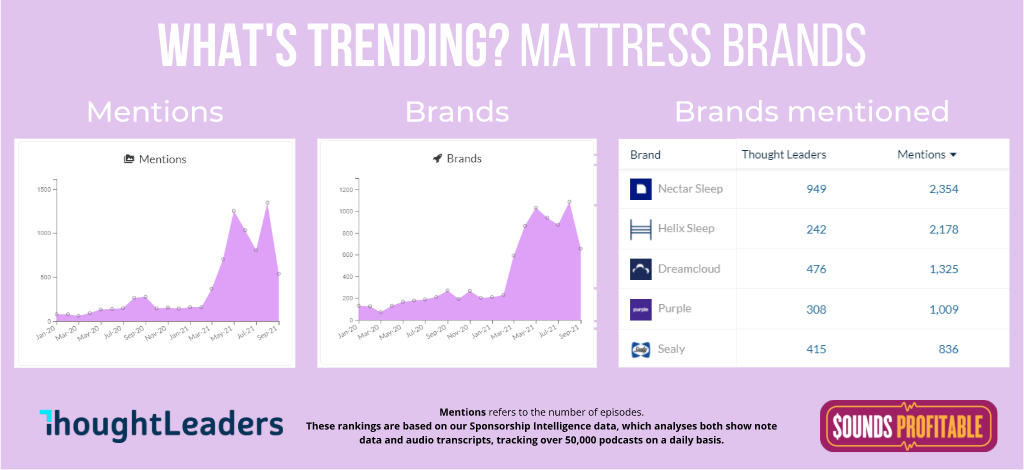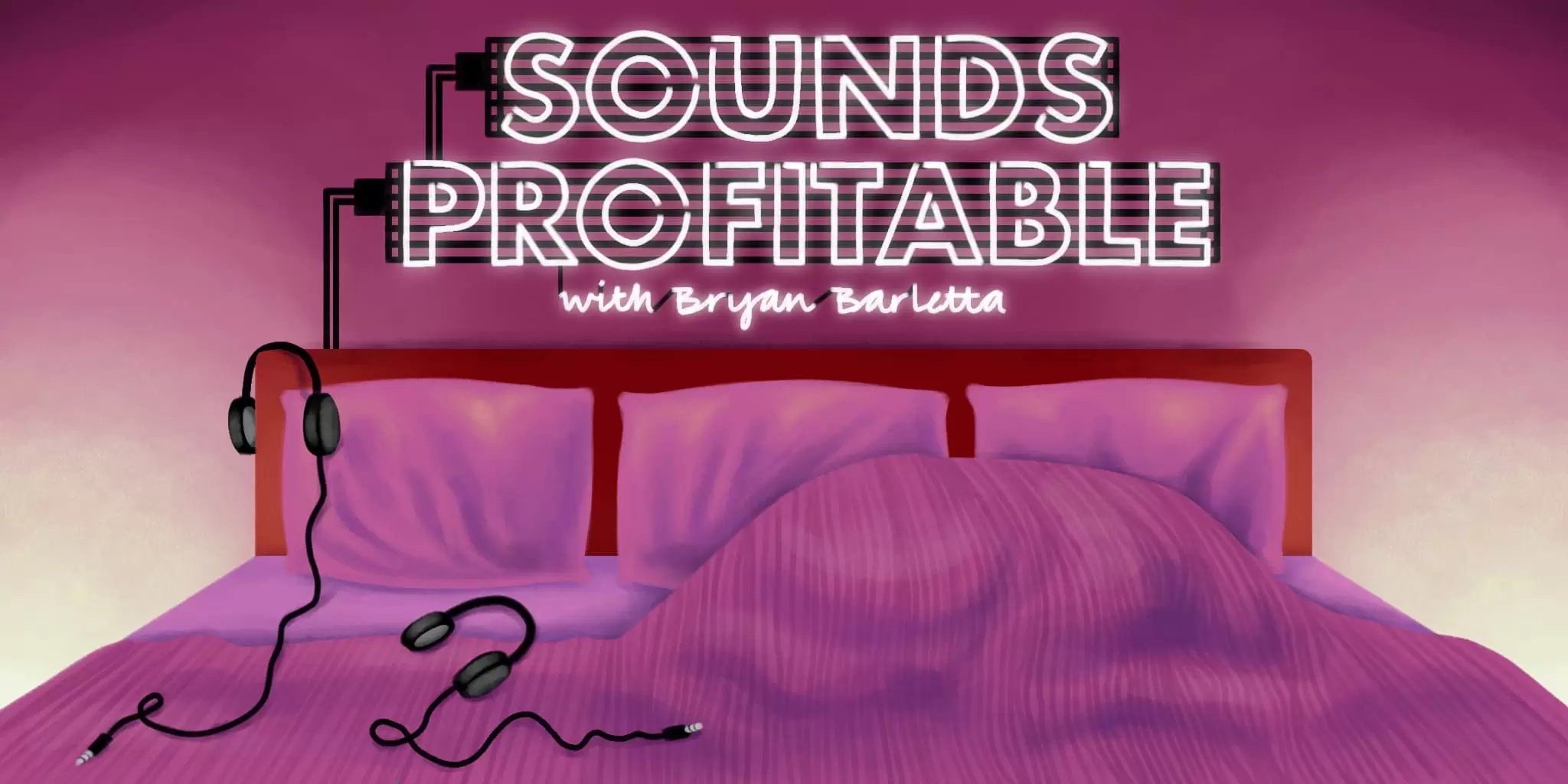Sounds Profitable the Podcast is back with our new co-host Arielle Nissenblatt. Early access to episodes and narrated articles are completely free through Supercast, or find the latest episode in your app of choice.
In the past few months, I’ve had the opportunity not only to learn from Gabriel Soto of Edison Research but also the privilege to share a virtual stage with him. As one of the authors of the Latino Podcast Listener Report, Gabe is the perfect person to write to all of you, while you’re planning out 2022, on why you should be prioritizing the Latino audience and content creation in Spanish. Gabriel Soto writes…
Advocating for more Latinos and investment in Latino podcasting isn’t just about diversity or equity, or following through with the pledge of inclusion that people made during last year’s racial reckoning (though those are, of course, important). Simply put, having a podcast marketing plan with Latinos is a smart business decision because they are the future, or the “biggest engine of U.S. economic growth”, as Forbes put it two years ago.
For the longest time, podcasters in the Latino segment could only appeal to advertising brands and investors by speaking to general statistics, like Latinos’ immense purchasing power and growing population size – for some, that was enough. But as one of the authors of the first comprehensive report on the Hispanic podcast audience — the Latino Podcast Listener Report — I want to add to this conversation by sharing some of my thoughts along with podcast listening data from the study. Ultimately, I want you to understand not only why it’s a great idea to invest and advertise to Latinos through podcasts, but how you, too, can advocate for Latinos in the podcasting and advertising space.
Purchasing power and population size
Let’s start with the basics. If you’re even just a little familiar with marketing to Latinos in the U.S., then you might know that they control an impressive $1.9 trillion in purchasing power, which is more than the GDP of countries like Italy, and ironically, Spain and Mexico. Only seven other countries’ GDP surpass U.S. Latino purchasing power, and Latinos are coming for them next as many forecasters expect their purchasing power to grow.
One concept driving that prediction is that Latinos harness a trait treasured by advertisers and agencies alike: youth. According to the U.S. census, the median age for Latinos in the U.S. is 30, which is eight years younger than the overall population median of 38 and 14 years younger than the White population’s median of 44. Opportunistic creators and advertisers have already begun building relationships with Latinos through podcasting, waiting for their audience, along with their investment, to mature.
At an estimate of more than 60 million people, the colossal size and fast-paced growth of Latinos is another factor behind increasing buying power. As the second-largest ethnic and racial group behind White-Americans — Latinos represent 19% of the U.S. population. That number soared by 70% between 2000 and 2019, compared to 16% growth of the overall population according to Pew Research. In addition, the U.S. 2020 census revealed that the U.S. population grew by 23 million and Hispanics accounted for half of that growth, while the people who checked white alone in the census declined for the first time in history. Many brands recognize that at this rate of population growth, Latinos hold a key to their future.
Usually, this is enough to convince many to invest into any Latino market. But don’t stop here — readers of Sounds Profitable surely know better than anyone that something else growing at a faster rate than the Latino population: podcasting.
Podcast listenership among Hispanics grew at unprecedented rates in 2020
In 2019, Edison Research and Triton Digital announced to the world “podcasting has reached a new milestone, with the majority of Americans now saying they have ever listened to one”. That information came from the Infinite Dial. For U.S. Latinos, however, that statement wouldn’t be true until two years later.
In 2020, we released the first U.S. Latino Podcast Listener Report, and, fortuitously, the podcast industry began to truly dial up its investment. Networks began committing to more content for Latinos, and platforms finally began granting search features for podcasts in Spanish. The Latino podcast community, who had long advocated for such actions, went to work. They produced and amplified content as they always did – this time, with the support of big players in the industry — and listening among Latinos surged.
By the following year, in our 2021 Infinite Dial report, the percentage of Latinos who had ever listened to a podcast (43%) would shoot up to 50% in a matter of twelve months. This unprecedented increase trickled down to monthly listeners too. 36% of U.S. Latino adults (16 million persons) now listen to podcasts monthly, which is a 44% increase since 2020 (25%). In fact, Latinos are the fastest adopters of podcasts during the pandemic when compared to all major ethnic groups.
For podcast advertisers and investors, this is an example of what can be accomplished when institutions invest in Latinos, and how the sheer growth in Latino podcast listeners can give way to new marketing opportunities. The data are clear—and these data can also help us put to rest an idea that had long prevented investment in Latino podcasting.
Smartphone accessibility has been increasing over time, but it should never have a barrier for Latinos in the first place
In the past, one of the biggest barriers to Latinos adopting podcasts was the unfounded idea that Latinos did not own smartphones. Ten years ago, when CeeLo Green was screaming “F*@k You” from the top of the billboard charts and I was still walking through my high school hallways – mind you without a smartphone (and possibly a hall pass) — the company I would work for in the future was reporting that 31% of the total population owned one. Smartphone ownership among Latinos, in reality, surpassed the general population at 36% that year – and largely because the younger groups drove that number higher.
Over the years, investors would use the mythical smartphone gap as an excuse to stay away from the Latino podcast market. Justified? The myth certainly was not, but the reasoning blinded by the myth — I guess. Over time the smartphone evolved into the preferred choice for the majority (67%) of the current weekly podcast listening audience, who use the piece of technology most to listen to podcasts in our latest quarterly Podcast Consumer Tracking Report. The implication here? The more people adopt smartphones, the more they will adopt podcasts. And many investors at the time falsely claimed that Latinos were not making the cut.
Ten years since my high school days and CeeLo Green’s peak of fame in 2011, non-smartphone owners are vanishing; 83% of U.S. Latinos say they own a smartphone now (myself included). And while yes, the more people adopt smartphones, the more they will adopt podcasts, let’s remember that Latinos are by far younger than the general population, and with that comes increased tech-savviness. Adoption will come easier to them. And we have seen that companies that got a head start in the Latino podcasting space have been reaping the benefits of the positive opinion Hispanics have for the brands they hear on Latino podcasts.
Affinity for Brands on Latino Podcasts
Hispanics are attracted to podcasts made by other Hispanics. Sixty-two percent of Latino monthly podcast listeners report listening to one that was hosted by Latinos in the last month, and 39% say within the last week. Such frequent listening illustrates how much this audience enjoy these podcasts and, as a product of that, the brands that advertise on them.
The overwhelming majority (84%) of Latino monthly podcast listeners say they’re “very likely” or “somewhat likely” to consider a brand if they heard it advertised on podcasts hosted by Latinos. In the same context, 83% say they’re likely to recommend the brand, and more than three-quarters (76%) say they’re likely to purchase the brand.
The positive regard Latinos have for brands advertising on their favorite podcasts is a green light for advertisers and creators contemplating Latino podcasts. And the Latino podcast audience, like the podcast audience in general, makes for a very compelling advertising target.
Higher income, higher employment, and higher education
Podcasts are attractive to advertisers because, in general, the medium is a magnet for people who have higher income, more employment, and who are more likely to have four-year or advanced degrees compared to the general population. These demographic traits are also true with Latinos.
In our latest U.S. Latino Podcast Listener Report, 44% of Latino monthly podcast listeners report household incomes exceeding $75,000 per year, nearly double the percentage of non-listeners at 23%. In addition, 55% of Latino monthly podcast listeners have a four-year college degree or higher, compared to 31% of non-listeners. Finally, 59% of Latino monthly podcast listeners are full-time employees, higher than the U.S. average.
These people all in one place has been a dream come true for many brands — not only does it make it easier to be where they are, but podcasting has also opened the door to never-before-seen data that advertisers love and that other mediums, like radio, cannot provide.
Finally, one of my favorite arguments for investing in Latino podcasting and podcasters is the idea that Latinos in the United States are a bridge to a looming and emerging market for podcasts beyond our borders.
Gateway to the Americas and beyond
The city of Miami is not only the city in which I write this article, but also one with sprawling Latino culture, where Spanish (and Spanglish) runs throughout every fabric of life from corporate businesses to the beaches — it’s no wonder its nickname is “the gateway to the Americas”. With 73% of the population identifying as Hispanic, Miami understood years ago that investing in Latinos would propel the city into a self-sustaining metropolis. This idea, believe it or not, is universal and can be applied to podcasting.
As an advertising brand or content creator, you can follow Miami’s example by creating and investing in content for Latinos through podcasting. Like Miami, not only would you be appealing to the 60 million Latinos living in the U.S. — but you would also be opening the door to the more than 660 million living in Latin America and the Caribbean (twice the size of the U.S. population) and more than 470 million native Spanish speakers worldwide, if your content is in Spanish.
And you wouldn’t be limiting your outreach to just these people! Miami thrives on non-Hispanic and non-Spanish speaking tourists and residents too. If you target Latinos, Latinos aren’t all you would get. Just ask Adonde Media and LWC Studios, two Latina-owned production companies leading the way in developing podcasts for Latinos. It would be incorrect to say their audience is only Latino. The best creators have learned to prioritize niche markets by positioning their respective traditions, customs, and sometimes language at the forefront of their content while still captivating people beyond that, with the real strength of podcasting: storytelling. It is the same reason Latinos have long purchased brands they’ve consumed on content starring non-Latinos.
Resources
Now that you have a sense of why Latinos are worth investing in and advertising to via podcasts — here are some more resources creators, advertisers, advocates, and anyone interested in Latinos and podcasting can use to make their own case.
The Latino Podcast Listener Report
Both the 2021 and 2020 editions are free and available for download – and so is a bonus edition about non-listeners in 2021. The information inside has many key insights into behaviors and perceptions from Latino podcast listeners and non-podcast listeners. It can drive your strategy and content, as well as help you advocate for investments and ad spend.
Survey your own audience
This is my go-to tip for anyone looking for advice on podcasting — do your own research. Much of the Latino Podcast Listener Report is based on macro level data. If you’re a creator, your listeners may be similar, but will almost never be exactly alike. Your listeners might have more appealing traits like higher income, or more time spent listening to podcasts on which you might be missing out. You can measure that by surveying your own audience. If you don’t know how to get started, Edison Research has a free template you can use that Sounds Profitable wrote about, no questions asked.
Learn from the leaders in Latino podcasting
Now is a great time to get to know, and learn from the leaders in Latino Podcasting, who know more about these valuable listeners than anyone. Keep in touch by following them on social media, reading their blog posts, and introducing yourself at a conference. Don’t sleep on the biggest engine for U.S. economic growth!
New Sponsor
Sounds Profitable continues to grow thanks to the support of our amazing sponsors. Each sponsor receives one hour of consulting per month as a way to say thanks.
mowPod – Hyper-targeted downloads for your podcast – get in front of your podcasts listeners wherever they happen to be on the web.
Want to learn more about sponsorship? Hit reply!
Rel’s Recs

This week, Arielle Nissenblatt of Earbuds Podcast Collective recommends Good Sex, from Lemonada Media, hosted with Omny Studio.
“This is a show you should definitely enjoy with headphones on. In each, short episode, you’ll find a window into someone’s private life – and a quick look through the episode titles will tell you that there’s truly something for everyone – Lemonada Media isn’t afraid to push the boundaries.”
Market Insights – with ThoughtLeaders

Noam Yadin, Content and Social Media Manager at ThoughtLeaders joins me this week to share insight into current trends:
Mattress brands are doubling down on podcasts! According to reports, “the bedding category’s average monthly spending is up by 27% from spring to summer this year”. For example, Helix Sleep has spent over a million dollars in May 2021. Moral of the story – don’t sleep on mattress brands.


















































































































































































































